CAA News Today
2017 TERRA FOUNDATION FOR AMERICAN ART INTERNATIONAL PUBLICATION GRANT WINNERS
posted by CAA — Apr 03, 2017
 CAA is pleased to announce the 2017 recipients of the Terra Foundation for American Art International Publication Grant. This program, which provides financial support for the publication of book-length scholarly manuscripts in the history of American art, is made possible by a generous grant from the Terra Foundation for American Art. For this grant, “American art” is defined as art (circa 1500–1980) of what is now the geographic United States.
CAA is pleased to announce the 2017 recipients of the Terra Foundation for American Art International Publication Grant. This program, which provides financial support for the publication of book-length scholarly manuscripts in the history of American art, is made possible by a generous grant from the Terra Foundation for American Art. For this grant, “American art” is defined as art (circa 1500–1980) of what is now the geographic United States.
“This year’s publication grant recipients demonstrate once again how this program serves the mission of advancing and internationalizing scholarship on American art,” says Francesca Rose, Program Director for Publications at the Terra Foundation for American Art. “Whether by funding translations or supporting original research in languages other than English and publications by early-career U.S. scholars, the 2017 publication grants allow for the dissemination of important scholarship to the global Americanist community. In addition, providing for travel to the CAA Annual Conference facilitates participation by non-U.S. authors in U.S. professional networks.”
The six Terra Foundation grantees for 2017 are:
- Philippe Artières, Attica, USA, 1971, Le Point du Jour
- Emily Burns, Transnational Frontiers: The Visual Culture of the American West in the French Imagination, 1867–1914, University of Oklahoma Press
- Sophie Cras, The Artist as Economist: Art and Capitalism in the 1960s, Yale University Press
- Kenji Kajiya, Formless Modernism: Color Field Painting and 20th-Century American Culture, University of Tokyo Press
- Kate Lemay, Triumph of the Dead: The American War Cemeteries in France, University of Alabama Press
- ShiPu Wang, The Other American Moderns, Pennsylvania State University Press
Two non-US authors of top-ranked books have also been awarded travel funds and complimentary registration for CAA’s 2018 Annual Conference in Los Angeles; they also received one-year CAA memberships.
The two author awardees for 2017 are:
- Sophie Cras
- Kenji Kajiya
“The Terra Foundation award is unique in that it supports publishers in the United States and abroad and also provides funds for authors of award-winning books to attend the CAA Annual Conference,” says Betty Leigh Hutcheson, Director of Publications at CAA. “Scholars outside the United States who receive travel grants can expand their networks, gain exposure to new ideas, meet publishers at the Book and Trade Fair, and apply to present papers at the conference. The success of the Terra Foundation program is grounded in the high quality of manuscripts CAA receives each year and our ability to financially support these projects. CAA has played a vital role in this process for the past three years, which is particularly gratifying as we see awarded projects reach completion.”
About CAA
The College Art Association is the world’s largest professional association for artists, art historians, designers, arts professionals, and arts organizations. CAA serves as an advocate and a resource for individuals and institutions nationally and internationally by offering forums to discuss the latest developments in the visual arts and art history through its Annual Conference, publications, exhibitions, website, and other programs, services, and events. CAA focuses on a wide range of advocacy issues, including education in the arts, freedom of expression, intellectual-property rights, cultural heritage and preservation, workforce topics in universities and museums, and access to networked information technologies. Representing its members’ professional needs since 1911, CAA is committed to the highest professional and ethical standards of scholarship, creativity, criticism, and teaching.
About the Terra Foundation for American Art
Established in 1978, the Terra Foundation for American Art is dedicated to fostering the exploration, understanding, and enjoyment of the visual arts of the United States. With financial resources of more than $350 million, an exceptional collection of American art from the colonial period to 1945, and an expansive grant program, it is one of the leading foundations focused on American art, supporting exhibitions, academic programs, and research worldwide.
Meiss Call for Jurors 2017
posted by CAA — Mar 13, 2017
CAA seeks nominations and self-nominations for one individual to serve on the Millard Meiss Publication Fund Jury for a four-year term, July 1, 2017–June 30, 2021. Candidates must be actively publishing scholars with demonstrated seniority and achievement; institutional affiliation is not required.
The Meiss jury awards subsidies to support the publication of book-length scholarly manuscripts in the history of art and related subjects. Members review manuscripts and grant applications twice a year and meet in New York in the spring and fall to select the awardees. CAA reimburses jury members for travel and lodging expenses in accordance with its travel policy. Members volunteer their services to CAA without compensation.
Candidates must be CAA members and should not currently serve on another CAA editorial board or committee. Jury members may not themselves apply for a grant in this program during their term of service. Nominators should ascertain their nominee’s willingness to serve before submitting a name; self-nominations are also welcome. Please send a letter describing your interest in and qualifications for appointment, a CV, and contact information to: Millard Meiss Publication Fund Jury, College Art Association, 50 Broadway, 21st Floor, New York, NY 10004; or send all materials as email attachments to Deidre Thompson, CAA publications assistant, dthompson@collgeart.org. Deadline: April 21, 2016.
Affiliated Society News for March 2017
posted by CAA — Mar 10, 2017
Association of Academic Museums and Galleries (AAMG)
Registration and program information for the 2017 AAMG Annual Conference in Eugene, OR is now available. Please click here to access the schedule of presentations, workshops, receptions, and much more.
Online registration, as well as hotel and travel information, is also now online. Please note: AAMG institutional and individual members will need to login with their username and password to be eligible for the $250 early bird rate. The special member rate is available through April 15. If you have difficulty with logging in to your account, click here to reset your password or contact membership@aamg-us.org.
We hope to see you in Eugene this summer for what will be our biggest and best AAMG Annual Conference to date!
Association of Historians of American Art (AHAA)
The Association of Historians of American Art (AHAA) was happy to see many members at CAA for its Annual Meeting and its sponsored session, “The Gustatory Turn in American Art.” February 2017 also marked a changing of the guard of sorts, as we welcome several new board members to our ranks. We wish to express our gratitude to outgoing Board members Anna Marley (Chair Emerita), Monica Jovanovich-Kelley (Treasurer), Jillian Russo (Secretary), Melissa Renn (Membership Coordinator), and Annelise Madsen (Web Coordinator). We are grateful for their years of service to the organization!
We welcome the following incoming board members: Miguel de Baca (Co-Chair), Diana Seave Greenwald (Treasurer), Naomi Slipp (Secretary), Jonathan Walz (Membership Coordinator), and Jeff Richmond-Moll and Andrea Truitt (Web Co-Coordinators). Additionally, the Executive Editors of our online journal Panorama will be joining the board, and so we are pleased to work even more closely with Betsy Boone, Sarah Burns, and Jennifer Jane Marshall.
AHAA is also delighted to announce the venue for our October 2018 Symposium: Minneapolis, Minnesota! We look forward to sharing more information in the coming months as our colleagues at the University of Minnesota, the Minneapolis Institute of Art, and the Minnesota Museum of American Art develop their plans.
As always, we welcome hearing your news and views. You can learn more about AHAA or share your news by visiting our website at ahaaonline.org or emailing info@ahaaonline.org. We also welcome submissions, pitches, and proposals for our online journal; please visit journalpanorama.org.
Community College Professors of Art and Art History
CCPAAH wants to thank all of the presenters and participants at our Affiliated Society session at the 2017 CAA Annual Conference in New York. The panel Reinventing the Familiar: Updated Approaches in Art History and the Studio, was chaired by Susan Altman, Middlesex County College and included the following presentations: Taking Art History Beyond the Classroom by Maya Jiménez, Borough of Manhattan Community College, CUNY and Cheryl Hogue Smith, Kingsborough Community College, CUNY; Crowd-sourcing Global Art: Wikis and the Non-Western Canon by Jill Foltz, Collin College; Gaming the Critique: Providing Framework and Fun to the Group Critique by Tyrus Clutter, College of Central Florida; and Waging Art: When Fine Arts meets Workplace Development by Kathleen M. Dlugos, Westmoreland College. The successful Project Share at our early morning business meeting gave everyone lots of new ideas to bring back to our studio and art history classrooms.
CCPAAH will be sponsoring a session: Draw and Repeat: Reconsidering the Sketchbook at this year’s FATE Conference in Kansas City in April. Interested in presenting? The call for papers for next year’s CCPAAH Affiliated Session at the 2018 CAA Annual Conference will be posted is open through April 15, 2017. Submission site here.
Please follow us on Facebook: Community College Professors of Art and Art History and Instagram: @ccpaah. Interested in getting more involved? Contact Susan Altman at: ccpaah@gmail.com
FATE (Foundations in Art: Theory and Education)
Thank you to all who came to the FATE Affiliate Society session, “Using the F-word for Good, Not Evil: Fail, Fail Again, Fail Better,” at CAA this year. We had an excellent turn out!
Coming up, KCAI’s Foundation Department will host To the Core and Beyond, FATE’s 16th Biennial Conference from April 6th – 8th, 2017 at the Intercontinental at the Plaza in Kansas City. There, FATE members will gather as leading voices in fundamental art and design instruction and examine place, geography, introspective and reflexive actions, pedagogical values, and the potency of origins across the world. Influences from inside and outside the studio drive the development of Foundation programs and their students. In response to the conference theme, a broad spectrum of artists and academics will examine our reach as educators, and question how we instill world values through Foundation instruction and diverse programmatic structures. Enrique Martínez Celaya will be the 2017 FATE Conference Keynote Speaker.
More information about FATE’s 2017 conference.
In other news, FATE’s Positive Space: Episode 6 podcast is now live. In Episode 6, Jessica Burke (JB), Georgia Southern University & Emily Sullivan Smith, University of Dayton thoughtfully discuss the role of a Foundations Coordinator, balancing administrative roles with teaching & the pros/cons of a unified foundations curriculum.
More info? Please contact: Naomi J. Falk, naomijfalk@gmail.com
International Sculpture Center
Call for Panels now open for 27th International Sculpture Conference: Intersections + Identities. The ISC is seeking a diverse and comprehensive program, covering topics relevant to sculpture today. Apply online now! The call is open through March 13, 2017.
2017 Outstanding Student Achievement in Contemporary Sculpture Awards. Faculty, nominate your sculpture students today! Rules and details. Deadline: March 29, 2017. Email: studentawards@sculpture.org Phone: 609-689-1051 ext. 312
Japan Art History Forum (JAHF)
In recent elections, JAHF members elected: Julie Nelson Davis (University of Pennsylvania) to a 3-year term as President, Namiko Kunimoto (Ohio State University) to a 3-year term as Vice President, and Holly Rubalcava (University of Wisconsin-Madison) to a 2-year term as Graduate Representative.
The winner of the 2016 Chino Kaori Memorial Essay Prize for outstanding scholarship by a graduate student was Elizabeth Self, a PhD candidate in the Dept. of the History of Art and Architecture, University of Pittsburgh, for her paper titled “A Mausoleum Fit for a Shogun’s Wife: The Two Seventeenth-Century Mausolea for Sūgen-In.” The Chino Kaori Memorial Essay Competition is generously supported by the Japanese Art Society of America (JASA) and by University of Hawai’i Press. More information on the Chino Kaori Memorial Essay Prize.
The 2016 Clark Center Graduate Travel Grant was awarded to Ja Won Lee of the University of California, Los Angeles, who will be visiting the Museum of Fine Arts, Boston, to examine Japanese artworks from the collection in the context of her research on the collecting of Chinese antiques and its impact on visual and material culture in 19th and early twentieth-century Japan and Korea. More information on the Clark Center Graduate Travel Grant.
SECAC
SECAC was represented at CAA 2017 on the following session panels and with the following speakers: “In the Studio,” chaired by Elizabeth Heuer, University of North Florida; “Shared Space: The Home-Studio of Thomas Moran & Mary Nimmo Moran,” with Shannon Vittoria, The Metropolitan Museum of Art; “Dueling Studios: The Public and Private Images of Chaim Gross. Dueling Studios: The Public and Private Images of Chaim Gross,” with Sasha Davis, The Renee and Chaim Gross Foundation; “Free Markets, Free People: Discourse and Behavior in Lynda Benglis’ Lost Studio Tapes,” with Katie Anania, The University of Texas at Austin; and “The Studio as Model: From André Breton’s Wall to Fischli & Weiss’s Polyurethane Object Installations and Piero Giolio’s Studio,” with Susan Power, Los Angeles County Museum of Art.
SECAC 2017 Call for Papers deadline is April 20, 2017, midnight, EDT. Membership in SECAC is due at the time of paper acceptance, and registration fees are required of all. Columbus College of Art & Design (CCAD) looks forward to hosting “Microscopes and Megaphones,” the 73rd annual SECAC Conference, October 25-28, 2017. Eleanor Fuchs, Associate Provost at CCAD, will serve as conference director. Find more information here.
Society of Architectural Historians (SAH)
The Society of Architectural Historians (SAH) will host its 70th Annual International Conference in Glasgow, Scotland, from June 7–11, 2017. This is the first time that SAH has met outside North America in over 40 years! Meeting in Scotland’s largest city, world renowned for its outstanding architectural heritage, reflects the increasingly international scope of the Society and its conference. Architectural historians, art historians, architects, museum professionals and preservationists from around the world will convene to share new research on the history of the built environment. The Glasgow conference will include 36 paper sessions, eight roundtables, an introductory address and plenary talk, architecture tours, the SAH Glasgow Seminar, and more. Early registration ends March 14, 2017. Tours-only registration opens to the public on March 15, 2017.
The call for papers for the SAH 2018 Annual International Conference in St. Paul, MN, will open on March 31, 2017.
SAH is seeking educators to produce K-12 lesson plans for SAH Archipedia, an authoritative online encyclopedia of the built world published jointly by the Society of Architectural Historians and the University of Virginia Press. Interested educators should submit a proposal that includes a 500-word abstract outlining the topic of the lesson plan and include a preliminary list of the SAH Archipedia content the project would incorporate. Read the submission instructions here. Proposals are due by March 31, 2017.
SAH is accepting applications for the SAH/Mellon Author Awards through June 1, 2017. These awards are designed to provide financial relief to scholars who are publishing their first monograph on the history of the built environment, and who are responsible for paying for rights and permissions for images or for commissioning maps, charts or line drawings in their publications.
New in caa.reviews
posted by CAA — Mar 10, 2017
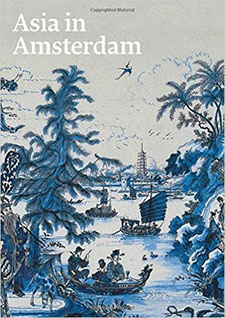 Dawn Odell discusses Asia in Amsterdam: The Culture of Luxury in the Golden Age, an exhibition catalogue produced by the Peabody Essex Museum and Rijksmuseum. “The marvel of this publication is its breadth,” as it “draws together a collection of stunning objects” and focuses “on the important role the Dutch played in facilitating and celebrating the material results of cross-cultural trade.” Read the full review at caa.reviews
Dawn Odell discusses Asia in Amsterdam: The Culture of Luxury in the Golden Age, an exhibition catalogue produced by the Peabody Essex Museum and Rijksmuseum. “The marvel of this publication is its breadth,” as it “draws together a collection of stunning objects” and focuses “on the important role the Dutch played in facilitating and celebrating the material results of cross-cultural trade.” Read the full review at caa.reviews
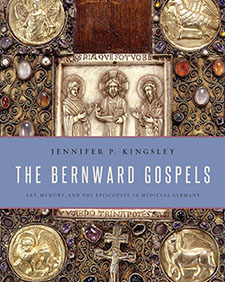 Karen Blough reads The Bernward Gospels: Art, Memory, and the Episcopate in Medieval Germany by Jennifer P. Kingsley. “Focusing minutely on a single patron and the visual program of one commission,” the author “brilliantly addresses a multitude of issues in Ottonian theology, history, and art” and makes “a valuable contribution to English-language scholarship on Ottonian art history.” Read the full review at caa.reviews
Karen Blough reads The Bernward Gospels: Art, Memory, and the Episcopate in Medieval Germany by Jennifer P. Kingsley. “Focusing minutely on a single patron and the visual program of one commission,” the author “brilliantly addresses a multitude of issues in Ottonian theology, history, and art” and makes “a valuable contribution to English-language scholarship on Ottonian art history.” Read the full review at caa.reviews
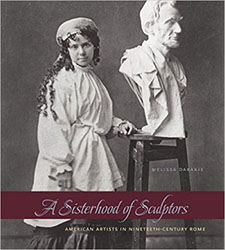 Emily C. Burns reviews Melissa A. Dabakis’s A Sisterhood of Sculptors: American Artists in Nineteenth-Century Rome. The author puts “sculptural production in dialogue with literature, visual culture, and the political and social histories of Rome and the United States,” tracing the city “as a welcoming site for feminine creativity” and “a complex site for gender politics and constructions of American culture.” Read the full review at caa.reviews
Emily C. Burns reviews Melissa A. Dabakis’s A Sisterhood of Sculptors: American Artists in Nineteenth-Century Rome. The author puts “sculptural production in dialogue with literature, visual culture, and the political and social histories of Rome and the United States,” tracing the city “as a welcoming site for feminine creativity” and “a complex site for gender politics and constructions of American culture.” Read the full review at caa.reviews
Committee on Women in the Arts Picks for March 2017
posted by CAA — Mar 10, 2017
Each month, CAA’s Committee on Women in the Arts selects the best in feminist art and scholarship. The following exhibitions and events should not be missed. Check the archive of CWA Picks at the bottom of the page, as several museum and gallery shows listed in previous months may still be on view or touring.
March 2017
From the Collection: Sister(s) In the Struggle: Angela Davis and Kathleen Cleaver
Ryerson Image Centre
33 Gould Street, Toronto, Ontario, Canada
Photographs of Angela Davis on view: January 18–March 5, 2017
Photographs of Kathleen Cleaver on view: March 7–April 9, 2017
Curated by Julie Crooks, Sister(s) In the Struggle: Angela Davis and Kathleen Cleaver features photographs of two leading female figures of the Black Panther Party taken from the Black Star Collection at the Ryerson Image Centre. “They were photographed excessively,” Crooks said in an interview with Flare, “and their images were ubiquitous. They were in newspapers, they were in journals, they were on posters and their representations, or likenesses, were all over the place and that created this kind of cult presence…. At times the photographs could be detrimental to one’s image, especially someone like Angela Davis, but I think they also fed into this kind of iconic status.”
In choosing to pull photographs from the Black Star Collection from the civil rights area, Crooks explained that she wanted to humanize the representation of Davis and Cleaver, selecting images that offered a previously unexplored way of looking at them. The exhibition creates comparisons to many other women behind the scenes—those who are not remembered. “I wanted to highlight these photographs because the Black Power statement was, ‘black is beautiful’ and that was kind of a relentless message: that we are beautiful, despite hundreds of years of representation that told us otherwise, Crooks told Flare.
This exhibition is part of a collaboration between the Ryerson Image Centre and Black Artists’ Networks Dialogue, called Power to the People: Photography and Video of Repression and Black Protest, which will run until April 9.
Amy Jorgensen: Something Old, Something New, Something Borrowed, Something Blue
Elizabeth Houston Gallery
190 Orchard Street, New York, NY
February 8–March 12, 2017
Something Old, Something New, Something Borrowed, Something Blue by Amy Jorgensen is a series of delicate handkerchiefs emblazoned with historic images of suffragettes. In fact, displayed on each piece of linen is the surveillance images of eighteen women taken from the 1913 Criminal Records Office of Scotland Yard.
“Recognizing in this episode a peculiar confluence of gazes, Jorgensen re-contextualizes and re-situates these images into the wider question of how women’s identities are constructed, and how they are obstructed…. The gift of the handkerchief is a matrimonial tradition passed from mother to daughter, woman to woman. This work investigates the search for, or the making of, identity that draws upon the plurality and fraction of the self, and the span of influence that is made from generation to generation.”
These discrete portraits of women suffragettes were taken and cataloged by Scotland Yard after a series of acts of civil disobedience, including arson, window breaking, and other public disturbances, which in turn created a national scandal. Jorgensen, who transferred the photographs to the handkerchief using cyanotype, an early-nineteenth-century photographic process pioneered by a woman, first discovered the images while researching Edna Berg, her great aunt and an impassioned suffragette from New York.
“The juxtaposition of these two histories—that of the matrimonial ceremony and that of the women of the suffragette movement—provides a jarring collision point for the examination of patriarchal structures both in history and contemporary culture.”
Jennifer Brea: Unrest
Film
SXSW, Austin, Texas
March 10–19, 2017
After making its debut at the 2017 Sundance Film Festival, Unrest by the director Jennifer Brea travels to SXSW in Austin, Texas, this March. The film focuses on the life of Brea, who was diagnosed with Myalgic Encephalomyelitis, commonly referred to as chronic fatigue syndrome. Brea, a PhD student at Harvard University, found that she could not sign a check at a restaurant, becoming progressively worse in the months before her wedding. When doctors told her it was “all in her head,” Brea turned her camera on herself, filming from the confines of her bed.
Myalgic Encephalomyelitis (ME) is a systemic neuroimmune condition characterized by post-exertional malaise—a severe worsening of symptoms after even minimal exertion. The root causes and physical effects are not fully understood, especially in women. As Brea described in a TED Talk, her neurologist diagnosed her with conversion disorder and said her physical symptoms were the result of some distance emotional trauma. “It is a perfect custom prison,” Brea observed. “How can a disease this devastating be forgotten by medicine?”
“As I got sick, I found myself as part of cohort of women in their late 20s whose bodies were falling apart,” Brea explained, “and how hard it was to be taken seriously.” Her film explores her own diagnosis but also seeks to address the millions of others with the same condition.
As SXSW nears, screening days and times for Unrest will be posted on the schedule page. The full TED Talk with Brea can be found online.
The Art of Suor Plautilla Nelli
Uffizi Gallery
Piazzale degli Uffizi, 6, Florence, Italy
March 8–April 30, 2017
In the first of an open-ended, annual series of exhibitions dedicated to women artists—what the Italian press is calling “pink exhibitions”—the Uffizi Gallery will showcase the work of Suor Plautilla Nelli (1523–1587), an artist nun who was Florence’s first known female Renaissance artist. Works culled from her Domenican convent, as well as from churches and museums across central Italy, will go on display on March 8 to coincide with International Women’s Day; they will remain on view until April 30. The Florence-based organization Advancing Women Artists Foundation, which has been instrumental in facilitating the restoration of Nelli’s works, published the exhibition catalogue. Eike Schmidt, the Uffizi’s current director, was motivated to pursue this initiative after a conversation with the Guerrilla Girls.
Leila Alaoui: No Pasara
Musée des Beaux-Arts
1380, rue Sherbrooke O, Montreal, Canada
Through April 30, 2017
On January 18, 2016, a young French-Moroccan photographer named Leila Alaoui was killed in an attack in Burkina Faso. Alaoui, who had been in the West African nation on assignment for a report on women’s rights for Amnesty International, used her photography to highlight issues related to migration, displacement, and cultural identity. The twenty-four images of No Pasara, which means “no entry,” depict young Moroccans who dream of a better life on the other side of the Mediterranean. The series was commissioned by the European Union in 2008.
In a review of her work last year, a critic for the Economist wrote: “Alaoui’s photojournalism drove the reasons for the movement of humans—before and beyond today’s crises—home, by turning a lens on those who have been and continue to remain unseen between world crises. Economic migrants in the regions she captured, including young Moroccans, Lebanese and Sub-Saharan Africans willing to make perilous crossings for a life in Europe were the consistent thread through her projects.” Alaoui’s hauntingly beautiful images offer a trenchant and poignant vantage point from which to consider the global immigration crisis.
Walled Garden in an Insane Eden
Sara Zanin Gallery
Via della Vetrina, 2, Rome, Italy
February 9–March 25, 2017
“Is it only the external landscape which is altering? How often recently most of us have had the feeling of déjà vu, of having seen all this before, in fact of remembering these swamps and lagoons all too well. However selective the conscious mind may be, most biological memories are unpleasant ones, echoes of danger and terror. Nothing endures for so long as fear.”
—J. G. Ballard from The Drowned World (1962)
Borrowing its title from J. G. Ballard’s science-fiction novel and one of its dystopic tales, this exhibition brings together a contingency of London-based artists whose work engages with the political uncertainties introduced into the European landscape in 2016. Their responses, which include drawings, paintings, sculptures, textiles, and performance, range from skeptical to hopeful. Organized by Marcelle Joseph, the exhibition features mostly women artists, including Rebecca Ackroyd, Gabriella Boyd, Kira Freije, Marie Jacotey, Florence Peake, and Zadie Xa.
CAA Arts and Humanities Advocacy Toolkit
posted by admin — Mar 02, 2017
“The phone calls and emails began coming in a few weeks ago to the Nebraska congressional delegation — all Republicans, and all potentially crucial to an expected fight over the very existence of the National Endowments for the Arts and the Humanities under President Trump.” –“How to Block Trump Arts Cuts? Groups Look for G.O.P. Help,” The New York Times, February 28, 2017
Arts and Humanities Advocates are already taking action. CAA encourages its members and all advocates of the arts and humanities to be persistent and do more.
On January 23, 2017, CAA released a statement condemning the proposed budget cuts to the National Endowment for the Arts and the National Endowment for the Humanities, among other federal agencies.
“For more than a century, the College Art Association (CAA) has represented art historians, artists, museum professionals, designers, and others who think and care about the visual arts and its impact on our culture. We do this in part through direct advocacy for artistic and academic freedom.
Like many other Americans, we have closely watched the proposed changes to the federal government. Recent news reports reveal that the US President intends to propose the elimination of funding for the National Endowment for the Arts (NEA) and the National Endowment for the Humanities (NEH). This proposal is reportedly based in part on a recommendation by the Heritage Foundation that states, ‘As the U.S. Congress struggles to balance the federal budget and end the decades-long spiral of deficit spending, few programs seem more worthy of outright elimination than the National Endowment for the Arts.’
We offer our complete and total opposition to these efforts.”
The current administration’s proposal to cut funding for the NEA and NEH is based on a 1997 Heritage Foundation report, titled “Ten Good Reasons to Eliminate Funding for the National Endowment for the Arts.”
To support our statement, CAA has put together an Arts and Humanities Advocacy Tool Kit to help our members and anyone who wants to advocate for the arts and humanities. Information is power, after all. The Tool Kit information is pulled from a variety of sources that aid in forging partnerships, obtaining accurate data on the impact of the arts and humanities, and actions one can take in order to use your voice effectively.
We encourage you to contact us at CAA also. CAA staff will attend both Arts Advocacy Day and Humanities Advocacy Day. The more stories we can share as we meet with colleagues and representatives, the more influence we collectively bring to the table.
Locate and Call
Call your representatives about any and all pressing issues.
Find your local representative
This is a helpful guide on how to contact your local representative:
The How-to Guide to Contacting your Local Official
Face-to-Face
Face-to-face meetings with representatives are the most effective way to deliver your message. Hand your representative a physical document with facts and figures and be sure to explain who you are and how the group you represent relates to your local politician’s constituency.
Town Halls are one good way to voice your opinion to your local representative in person. The Federation for American Immigration Reform has a guide on how to attend Town Hall meetings.
You can also organize and request an appointment at the offices of your representative. The National Priorities Project has a good guide to setting up office appointments.
Sign Petitions
There are myriad petitions floating around these days, addressing vast numbers of topics. It can be hard to keep track or know which petitions to sign.
Change.org remains one of the best places to find a database of petitions by topic. The site also provides explanations and background information for each petition.
To sign the petition to support the NEA and NEH you can sign the White House created petition, the Change.org petition, and the Arts Action Fund petition.
Advocates can also send postcards directly to members of Congress that are customized with their artwork or other artworks, thanks to the #savethearts Postcard Project.
Arm Thyself with Data and Information
There is lots of good data about the impact of the arts and humanities on people and places. The National Humanities Alliance is working on several data gathering and mapping projects.
Americans for the Arts is also a hub for data and information about various federal arts agencies and arts education in America.
Data on the arts and humanities can also be found on the National Endowment for the Arts Facts & Figures page and the National Endowment for the Humanities Impact Reports.
This nifty website is a running tally of all the programs that the NEA funded in 2016.
You can also search the NEA website to see all grants they have awarded since 1996. Check to see what organizations in your local area are funded by the NEA.
The same search for grants can be done on the NEH website.
New in caa.reviews
posted by admin — Feb 24, 2017
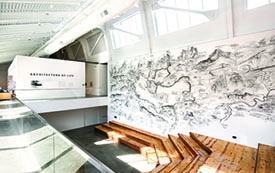 Danny Smith visits Architecture of Life, the inaugural exhibition in the new building of the University of California, Berkeley Art Museum and Pacific Film Archive. Presenting a “sweeping, cacophonous vision,” the show conceives “of architecture as the organizing principle of everything from reality to society and human relationships,” making it “a compelling examination in homemaking.” Read the full review at caa.reviews.
Danny Smith visits Architecture of Life, the inaugural exhibition in the new building of the University of California, Berkeley Art Museum and Pacific Film Archive. Presenting a “sweeping, cacophonous vision,” the show conceives “of architecture as the organizing principle of everything from reality to society and human relationships,” making it “a compelling examination in homemaking.” Read the full review at caa.reviews.
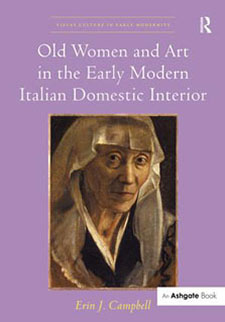 Kimberly L. Dennis reads Old Women and Art in the Early Modern Italian Domestic Interior by Erin J. Campbell. The author “describes a proliferation of portraits of old women in the second half of the sixteenth century in northern Italy,” arguing “that these portraits served to remind viewers of the duty of old women to model familial and civic virtue.” Read the full review at caa.reviews.
Kimberly L. Dennis reads Old Women and Art in the Early Modern Italian Domestic Interior by Erin J. Campbell. The author “describes a proliferation of portraits of old women in the second half of the sixteenth century in northern Italy,” arguing “that these portraits served to remind viewers of the duty of old women to model familial and civic virtue.” Read the full review at caa.reviews.
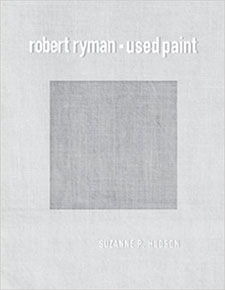 Dustin London reviews Suzanne P. Hudson’s Robert Ryman: Used Paint. The volume “documents the development of Ryman’s art from the early 1950s to the turn of the century” and “provides a thorough description and analysis of the variety of his approaches to painting.” Hudson “writes with eloquence and perspicuity to bring Ryman’s work to a wider audience on its own terms.” Read the full review at caa.reviews.
Dustin London reviews Suzanne P. Hudson’s Robert Ryman: Used Paint. The volume “documents the development of Ryman’s art from the early 1950s to the turn of the century” and “provides a thorough description and analysis of the variety of his approaches to painting.” Hudson “writes with eloquence and perspicuity to bring Ryman’s work to a wider audience on its own terms.” Read the full review at caa.reviews.
Exhibitions Curated by CAA Members
posted by CAA — Feb 15, 2017
Check out details on recent shows organized by CAA members who are also curators.
Exhibitions Curated by CAA Members is published every two months: in February, April, June, August, October, and December. To learn more about submitting a listing, please follow the instructions on the main Member News page.
February 2017
Susan Ball. Towards Abstraction, 1940–1985: Brett Weston Photographs from the Bruce Museum Collection. Bruce Museum, Greenwich, Connecticut, November 5, 2016–February 12, 2017.
Christine Giviskos. Toutes Les Nouvelles – All the News: Current Events in Nineteenth-Century French Prints. Zimmerli Art Museum at Rutgers University, New Brunswick, New Jersey, January 21–July 30, 2017.
Donna Gustafson. Guerrilla (and Other) Girls: Art/Activism/Attitude. Zimmerli Art Museum at Rutgers University, New Brunswick, New Jersey, February 4–July 30, 2017.
Hunter O’Hanian Welcomes you to CAA 2017
posted by admin — Feb 06, 2017
A message from CAA Executive Director Hunter O’Hanian about the 2017 Annual Conference
Greetings,
I am very much looking forward to my first Annual Conference as CAA’s new Executive Director. I think the Annual Conference Committee has done a great job presenting an amazing lineup of sessions and the CAA staff has worked hard to make sure that this will be one of the best conferences ever. Many thanks to Tiffany Dugan, Paul Skiff, Katie Apsey and the rest of the Annual Conference staff who have put in so many hours.
But we also need your help at the Annual Conference.
I’d like every attendee to think about three central ideas which will make the experience more rewarding for you and your fellow attendees.
Create an atmosphere of Inclusion – We’ve heard from past participants that they have not always felt welcome by other CAA members. Some have said that they felt marginalized due to their age, experience, or even the color of their skin. Others have said they felt somewhat judged by other CAA members based solely upon what is printed on their name badge.
Obviously we do not want any CAA member to feel this way. While the CAA staff and board will work to make everyone feel welcome and included, we ask they you do the same. Extend your hand and say hello to a stranger. Say hi to the person sitting next to you at a session. Chat with someone new in the elevator or in a coffee line. Together, we can work to make all of our members feel included.
We want to solve your problems – This year there will be more than 4,000 people in attendance at the conference. In essence, we will be creating a small town at the New York Hilton Midtown for the week. Inevitably, problems will crop up – and we want to solve them.
If you find you are having problems with membership, registration, locating information, please look for one of the CAA staff members wearing the “Ask Me!” button. They will try to quickly understand the issue and get you to someone who can resolve it as soon as possible. We are here to help and that’s what we intend to do!
We want your feedback – Building a CAA for the 21st century is the most important work ahead of us. We cannot do that without hearing what you need to help you in your respective professional fields. We need to hear from you. If you completed the recent survey, many thanks. Those results will be processed shortly.
The field and the organization is changing rapidly and we cannot strengthen it properly without hearing what you need and want. We encourage you to vote in the election for the new board of directors, either on the CAA website or on the CAA Annual Conference App. We encourage you to attend the myCAA session on Friday, February 17, 2017 at 12:15PM. If you cannot attend the session, email us noting a few things that you appreciate about CAA and a few things you would like to see improved. Or leave your comments on CAA Connect in the myCAA Discussion Community. What are the current benefits you value and what benefits would you like to see us add in the future?
Many thanks for taking the time to think about these key messages and I look forward to seeing you at the Annual Conference.
Best,
![]()
Hunter O’Hanian
Executive Director and Chief Executive Officer
New in caa.reviews
posted by admin — Jan 27, 2017
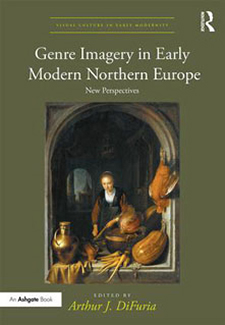 Wayne Franits reviews Genre Imagery in Early Modern Northern Europe: New Perspectives, edited by Arthur J. DiFuria. The eight essays “challenge” and “transcend” traditional studies on this topic “by exploring the complex, heterogeneous reception of such imagery among early modern viewers,” and they achieve this “noteworthy goal” with “varying degrees of success.” Read the full review at caa.reviews.
Wayne Franits reviews Genre Imagery in Early Modern Northern Europe: New Perspectives, edited by Arthur J. DiFuria. The eight essays “challenge” and “transcend” traditional studies on this topic “by exploring the complex, heterogeneous reception of such imagery among early modern viewers,” and they achieve this “noteworthy goal” with “varying degrees of success.” Read the full review at caa.reviews.
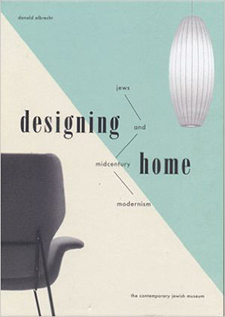 Deborah Lewittes discusses the exhibition catalogue for Designing Home: Jews and Midcentury Modernism, produced by the Contemporary Jewish Museum in San Francisco. Offering “a fresh take on the popular topic of twentieth-century domestic design,” the “elegant” and “graphically stunning” book is “a work of scholarly importance” and “provides interesting cultural tidbits.” Read the full review at caa.reviews.
Deborah Lewittes discusses the exhibition catalogue for Designing Home: Jews and Midcentury Modernism, produced by the Contemporary Jewish Museum in San Francisco. Offering “a fresh take on the popular topic of twentieth-century domestic design,” the “elegant” and “graphically stunning” book is “a work of scholarly importance” and “provides interesting cultural tidbits.” Read the full review at caa.reviews.
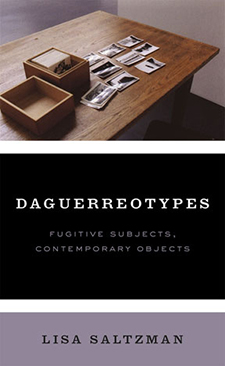 Astrid Köhler examines Daguerreotypes: Fugitive Subjects, Contemporary Objects by Lisa Saltzman. The volume “distinguishes itself from most other theories of photography, both in content and approach, via a lucid analysis” that “brings together heterogeneous objects that share a distinctive relation to time, identity, and memory.” Read the full review at caa.reviews.
Astrid Köhler examines Daguerreotypes: Fugitive Subjects, Contemporary Objects by Lisa Saltzman. The volume “distinguishes itself from most other theories of photography, both in content and approach, via a lucid analysis” that “brings together heterogeneous objects that share a distinctive relation to time, identity, and memory.” Read the full review at caa.reviews.





 Susan Ball points to a Brett Weston photograph
Susan Ball points to a Brett Weston photograph
 Honoré Daumier, Le Nouveau St. Sébastien. Vierge et martyr. from the series Actualités, 1849, lithograph on newsprint. Collection Zimmerli Art Museum at Rutgers, gift of William H. Helfand (artwork in the public domain; photograph by Peter Jacobs)
Honoré Daumier, Le Nouveau St. Sébastien. Vierge et martyr. from the series Actualités, 1849, lithograph on newsprint. Collection Zimmerli Art Museum at Rutgers, gift of William H. Helfand (artwork in the public domain; photograph by Peter Jacobs)
 Helen Miranda Wilson, The Cool Days of Early Spring, January 4, 2009, oil on panel. Collection Zimmerli Art Museum at Rutgers, gift of Leonard Rosenberg and Colombe Nicholas (artwork © Helen Miranda Wilson; photograph by Peter Jacobs)
Helen Miranda Wilson, The Cool Days of Early Spring, January 4, 2009, oil on panel. Collection Zimmerli Art Museum at Rutgers, gift of Leonard Rosenberg and Colombe Nicholas (artwork © Helen Miranda Wilson; photograph by Peter Jacobs)